The story coming out of another Detroit Lions’ loss last Sunday was the five second-half turnovers that wasted an unexpectedly solid defensive performance. After forcing just two punts the previous two weeks, the Dallas Cowboys were limited to 10 points through their first eight possessions, failing to record a first down on four of those series.
Obviously, things got away from the Lions in the fourth quarter, after the team’s offense coughed the ball up four times in the frame, giving Dallas short field after short field. Still, it represented remarkable improvement for a unit that came into the game allowing 429 yards per game entering the contest.
Given there’s little more to uncover about the giveaways, which included a trio of lost fumbles, we’re going to shine a light on Detroit’s defense, to understand what went well and whether it’s sustainable.
Okudah’s big day
Dallas is an offense that stresses you with their personnel. They’ll frequently utilize three-receiver formations on early downs, forcing you to match with a nickel defense. That creates a size mismatch they’ll try to exploit with their ground game, led by the dynamic backfield tandem of Ezekiel Elliott and Tony Pollard, by condensing their formations or overloading one side, isolating a defensive back to fill a weakside run gap.
The Cowboys did this repetitively against the Lions, often against Jeff Okudah, but the third-year cornerback was unfazed by the challenge, stepping up to deliver one of the best run-defending performances you’ll ever see by a cornerback.
Frequently sliding into the box when left without a receiver to defend to his side, Okudah repeatedly faced having to bring down a running back one-on-one in the hole and executed the taxing assignments almost every time.
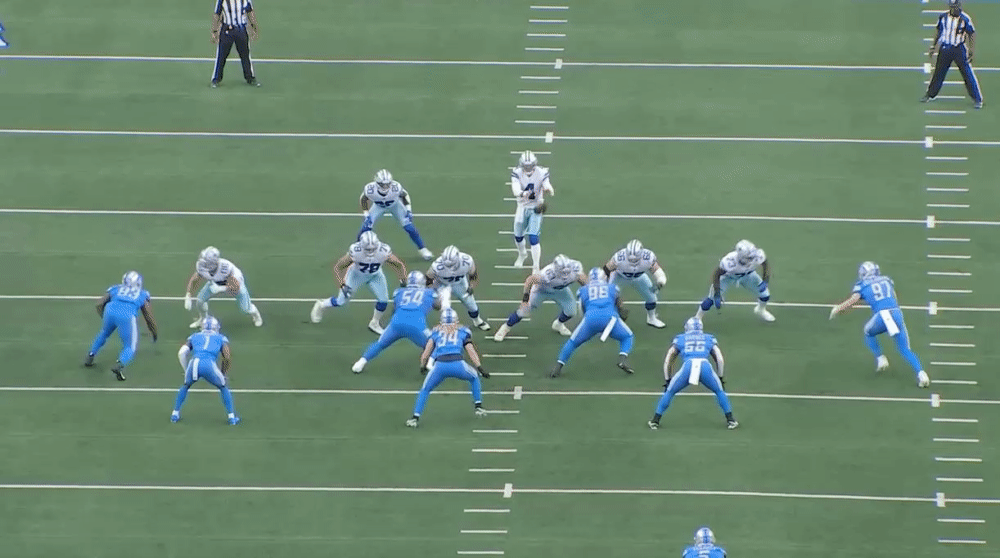
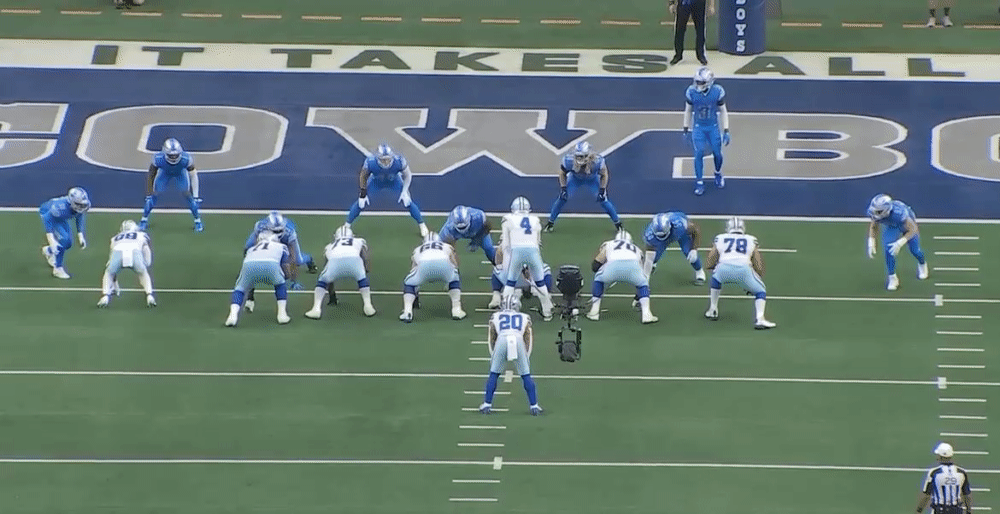
About the only time he didn’t make a play was when Dallas had a tight end climb to the second level to seal Okudah inside on a pitch.
Okudah finished the game with a career-high 15 tackles. It marked just the ninth time since 2000 a cornerback has recorded that many stops in a game and it’s unlikely many, if any, were the result of 10 or more tackles in run support.
In coverage, Okudah was also solid. He allowed three catches on four targets, but the Cowboys netted just 22 yards and a long of 10 on those receptions since the cornerback kept everything in front of him and didn’t miss an open-field tackle. The only time he was tested deep, on a third down in the first half, Okudah blanketed his assignment, forcing an incompletion.
Coach Dan Campbell called it Okudah’s best game and it’s nearly impossible to suggest otherwise.
Keeping Hutchinson on track
We’ve talked about Hutchinson plenty in these film reviews, including how his three-sack performance in Week 2 was largely the result of his teammates doing the work to create those opportunities. But this week, the Lions adjusted Hutchinson’s alignment and stance usage, freeing the young edge rusher to have more space to operate and allowing him to use a wider array of pass rush moves.
The results, 1.5 sacks, another QB hit and four total pressures.
Hutchinson’s first sack came from a wide alignment on the right side. Coming out of a three-point stance, he was able to quickly close on left tackle Tyler Smith, and despite missing a swipe of the blocker’s arm, Hutchinson successfully bent the edge and was able to grab quarterback Dak Prescott from behind and bring him down in tandem with blitzing linebacker Alex Anzalone.
Schematically, the Lions aided Hutchinson on the play by blitzing two linebackers up the middle. That commanded the attention of the running back staying in to block, eliminating his ability to double Hutchinson coming off the edge.
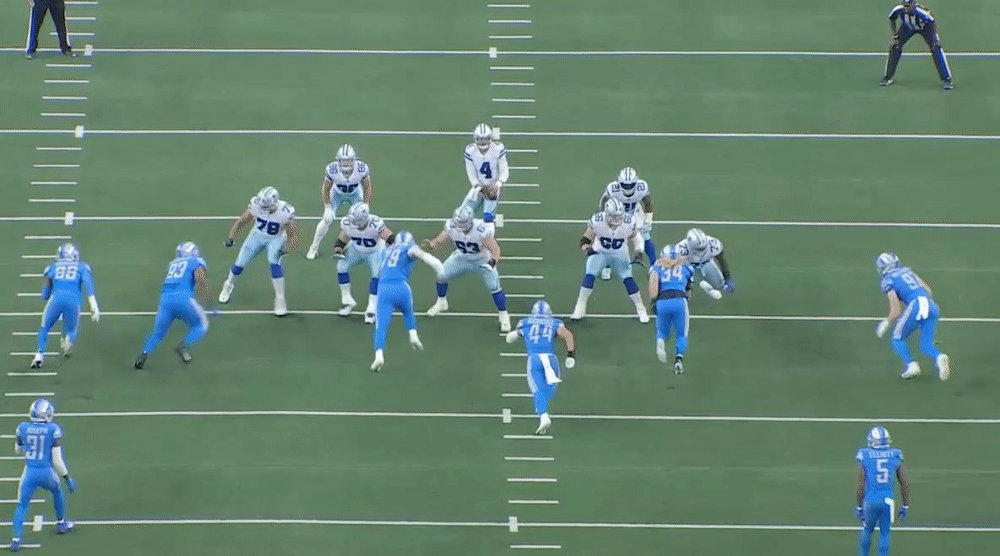
In the second quarter, Hutchinson utilized one of two effective spin moves. Again rushing from the right side, but this time standing up, he drew a favorable one-on-one matchup against tight end Dalton Schultz. Initially working a bull rush, Hutchinson tried to bend the corner, but feeling Schultz overcommit on the adjustment, the rookie spun back inside and hit Prescott as he released a deep throw that fell incomplete.

Hutchinson went back to the spin move on a critical third-down play in the fourth quarter, knocking the Cowboys out of field-goal range. Coming from the left this time, but once again standing up, the rush move appears pre-planned, spinning hard inside on his third step, catching tackle Terence Steele off balance and off-guard.
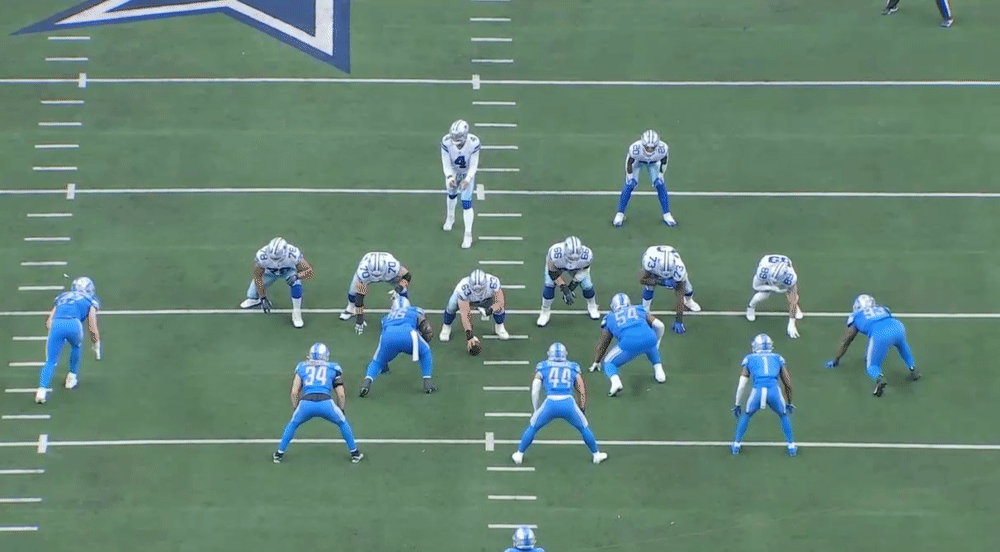
While it might be easy to point to Hutchinson rushing more from a two-point stance, like he did last year at Michigan, as the key to his success, it’s the wider alignments and assignment adjustments that allowed for changes to the stance and served as a tool to free up Hutchinson to better use his athleticism.
A promising debut
One of those factors that permitted changing Hutchinson’s schematic role was the insertion of rookie Josh Paschal into the mix, making his debut after offseason hernia surgery.
Without Paschal, the Lions had to lean on Hutchinson as a closed-side defensive end, lined up more inside to the strong side of the offense’s formation. That spot naturally draws more double teams, which has hindered Hutchinson’s ability to maximize his skill set.
The 6-foot-3, 275-pound Paschal is a natural fit as a strong-side defensive end, with natural leverage and adequate play strength to set a hard edge on that spot. The fact he played 56 snaps in his debut was surprising, but his conditioning held up and he never looked gassed, even in the late stages of the game.
In addition to creating opportunities for Hutchinson, Paschal played far better than could have been reasonably expected given how long he’d been out. From the early stages of the contest, he showed an ability to execute his assignment, contributing to a pair of run stops on the second defensive series, a three-and-out resulting in a Cowboys punt.
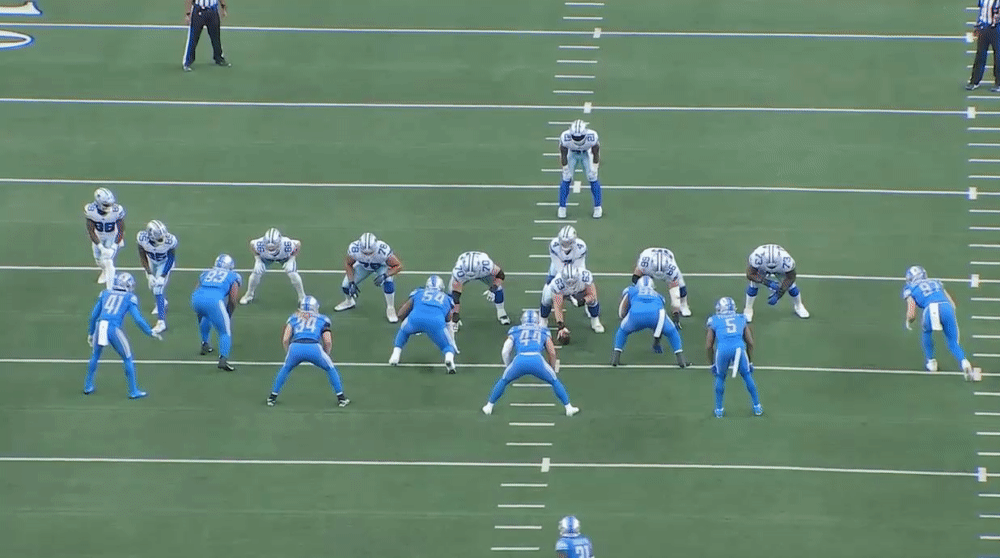
Paschal also showed up on the next possession, shedding a block and filling his gap on a third-and-short the Cowboys managed to covert and delivering a hit on Prescott after bending the edge on the offensive tackle. Based on his college tape, pocket disruption from the edge isn’t a strength, so even seeing a little of it in his debut is promising.
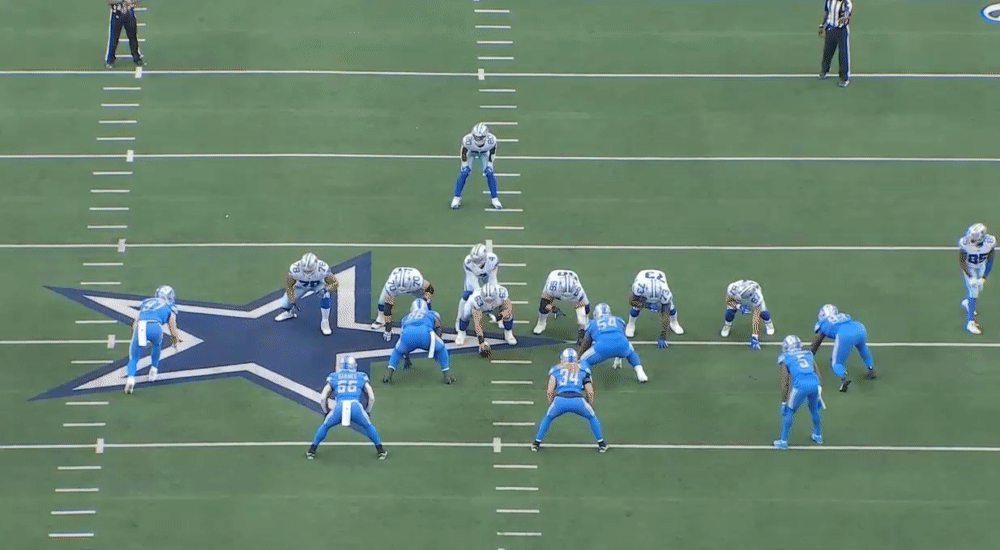
Paschal was less effective in the second half, showing some minor, but correctable awareness issues on a screen pass and two option runs. He also didn’t shed blocks as effectively when sealed on the outside edge, which could be subtly reflective of fatigue.
But overall, it was an encouraging debut.
Lingering concerns
For all the good we witnessed from the defense, there are lingering concerns.
In his first game back from a thumb injury, Prescott missed some coverage busts in Detroit’s back end that could have resulted in bigger gains than the check-down throws where the quarterback settled.
The Lions, as usual, played a heavy mix of coverages, most frequently utilizing a Cover-2 zone, with a defender carrying any deep routes through the middle, and Cover-1. The young secondary was in constant communication pre-snap, but there were a handful of snaps where a Cowboys receiver came wide open in the deeper portions of the field and you can anticipate opposing offensive coordinators will look to exploit these holes.
Additionally, Anzalone continues to struggle. Yes, he made a couple of key plays in the game, both contributing on Hutchinson’s first sack, as well as tracking a running back into the flat for a tackle for a loss on another third down. But Detroit’s starting middle linebacker continues to be a complete liability in coverage, while overcommitting on multiple run fakes.

Unlike the recent benchings of Amani Oruwariye and Michael Brockers, the Lions don’t really have a viable alternative to Anzalone on the roster. Malcolm Rodriguez, who continues to be the team’s most consistent linebacker, is a candidate to assume the middle-linebacking responsibilities next season, but general manager Brad Holmes is charged with finding a better second-level complement.
Finally, one that might be most easily correctable, defensive tackle Alim McNeill too often gets his post-snap positioning dictated by double teams. By being moved off his spot, it puts strain on the rest of the defensive line, best demonstrated by Paschal being asked to defend too much space on a late-game zone read that gained a significant chunk of yards into the red zone.

jdrogers@detroitnews.com
Twitter: @Justin_Rogers